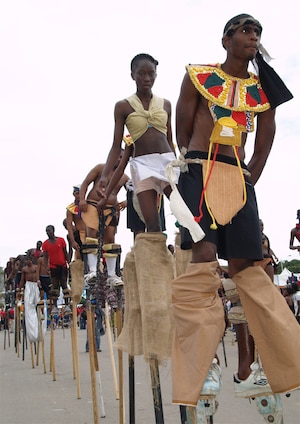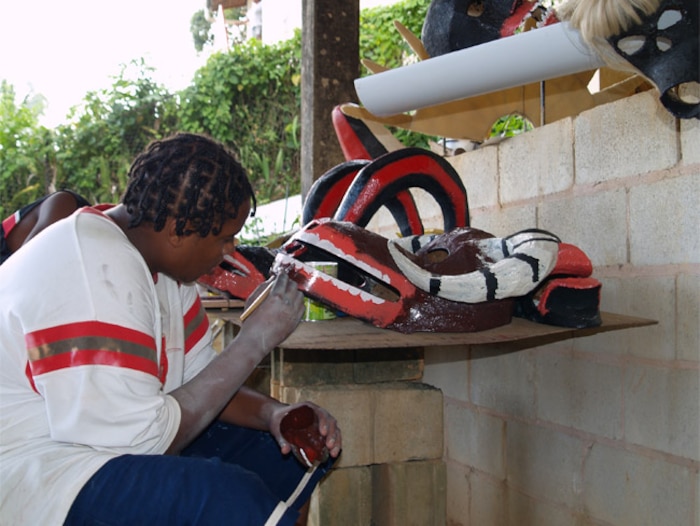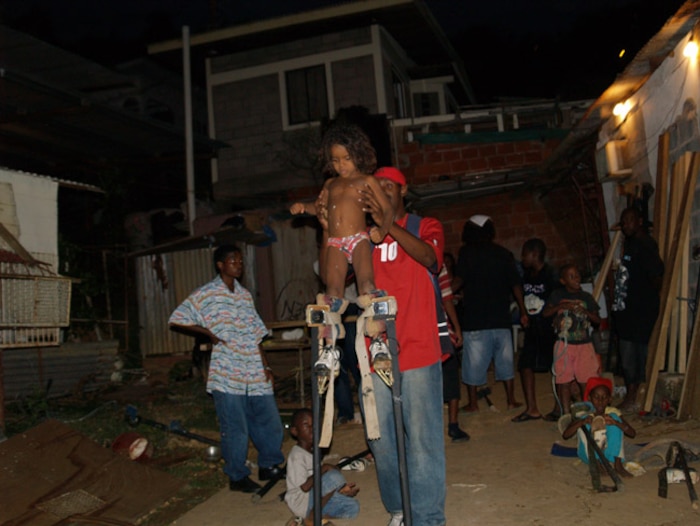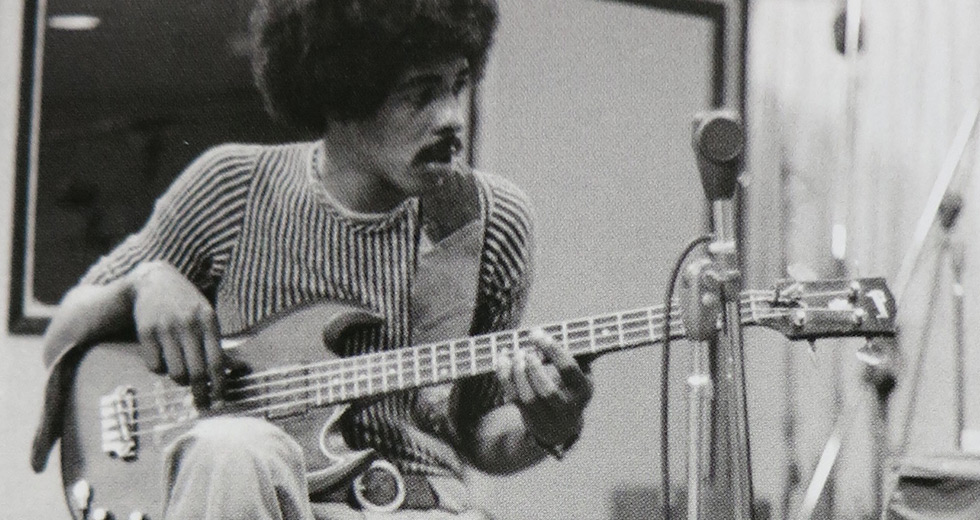Dancing in the Dragon’s Den: The Moko Jumbies of Trinidad

Carnival in Trinidad is sensory overload. Like Mardi Gras on steroids, this two-day pre-Lenten event has a spectacular array of costumed characters that parade through the streets of Port of Spain on a scale that must be seen to be believed. As well as masses of sweaty bodies covered in little more than sequins and beads, there are transgendered Dame Lorraines, fire-spitting Blue Devils, riddling Pierrot Grenades and alimony-seeking Baby Dolls, as well as Bats, Sailors and whip-cracking Jab-Jabs. But the ones that make the greatest impact, towering above everybody else, are the stilt-walking masquerade dancers known as Moko Jumbies. David Katz communes with these special spirit walkers and the man helping keep their traditions alive.
In several African territories, masked stilt-walkers are sacred guardians that bridge the ancestral spirit world and our earthly present; they ensure discipline is maintained and traditions are upheld, and can heal the sick or troubled. In Trinidad, the Moko Jumbies of the present day are living proof of African cultural resistance in the New World, having survived the Middle Passage and subsequent repressions enforced during slavery and its aftermath.
The term Moko has disputed origin, but is believed to stem from the secret societies of West or Central Africa, referencing village guardians that could foresee evil from a towering height, servants of a vengeful god that performed inscrutable actions as they communicated with the ancestors, reaching the skies without visible help. In different parts of the Caribbean, a Jumbie is a spirit being — typically malevolent — or a ghost; the name probably stems from the Kongo zumbi, from which “zombie” is derived.
Roughly half of Trinidad’s population hails from Africa, their ancestors mostly slaves from western areas, though others arrived from the Congo basin as indentured labour. The Moko Jumbie tradition clearly dates from slavery days and historical accounts place them at Trinidad Carnival since the early 1900s, when they had elaborate skirted costumes with feathered hats, collecting coins from balconies while dancing a jig (sometimes accompanied by dwarves to accentuate their height). But following World War II, their presence became increasingly rare. Then, in 1986, Glen “Dragon” deSouza and another man called Moose began to bring the tradition back, partly to steer local youth away from criminal activity. The revitalisation has proved highly popular since the 1990s, due in no small part to a general backlash against Carnival’s ongoing commercialisation.

Although several Moko Jumbie troupes are currently active on the island, including Kaisokah and Touch D Sky, Dragon’s Keylemanjahro is certainly the best known and most impressive. It is based at Dragon’s Yard, near Lamppost 9 in Cocorite, a neglected community nestled in the foothills of Port of Spain’s western boundary. On the day I visited, there were several dozen young people engaged in various activities. Most were putting finishing touches to the colourful masks they wear at Carnival, while others created costumes from found materials, such as the young woman who was decorating her billowing skirt with CDs, gluing them upside down on the fabric to better reflect the sunlight. Others were cleaning stilts or checking their general sturdiness. Everyone was clearly enjoying themselves, though Dragon is frequently distracted by misplaced energy, such as a boy spilling kerosene while attempting to breathe fire.
“I just wanted to do something to help the kids be off the streets. Right now I got about 150 members,” Dragon tells me. “I’m in the business for over 25 years, so I’ve trained over 3,000 kids. That’s why I stay in the Moko Jumbie and I’m loving it more the older I get. I engineer the sticks here myself, and you can see how comfortable the kids are here.”

Dragon has lived in Cocorite most of his life. He trained as a welder and started a short-lived band called The Chromatics, until the lure of the Moko Jumbie took over before he was even properly aware of it. “I started it by just taking a shovel and a garden fork, walking on them and digging up me grandmother yard and getting licks for that,” he says with a laugh. “I started doing it out of wildness, just to see what balance I had, then I go on to bamboo. After I reach a certain age and start reading more, I get to know that this is something I can develop.”
Moko Jumbies were seldom seen then, he explains, but word of his students’ skills has now spread far and wide. “25 years ago, I am the guy who give it a second life to have it where it is today, when people from all over the world come right here to see them walk. The youngest right now is my son, who had his first picture in the paper as a stilt-walker at 14 months old, and the oldest one I ever had was a guy who started at 74, but right now I want to break that record.”

When Dragon first founded the troupe, he named it Kilimanjaro, but conflict with a rival entity of the same name led to the Yard being officially re-titled the Dragon Keylemanjahro School of Arts and Culture. “Key is for the key we use to open all the doors that people may try to close; Le is the first two letters in the word Leaders; Man represent Mankind; Jah, the way we praise the Almighty as Rastafari; and Ro come from the way the people roar when the Moko Jumbies pass. And anybody is welcome to join the school, don’t care what colour, race or creed you come from.”
Once the sun went down, the Keylemanjahro yard was suddenly alive with lofty bodies, dancing on high with ease to pumping soca, as though it took nothing to twirl above a rooftop or pogo with one leg pointed at the moon. And to see them charging down the street en masse at the Carnival procession, fully costumed and masked like their ancestors, was simply unforgettable. “Moko Jumbie is an African art,” Glen emphasises. “This is an African tradition and I’m glad that I can still have a life after slavery, to help keep some of my old African arts alive.”

